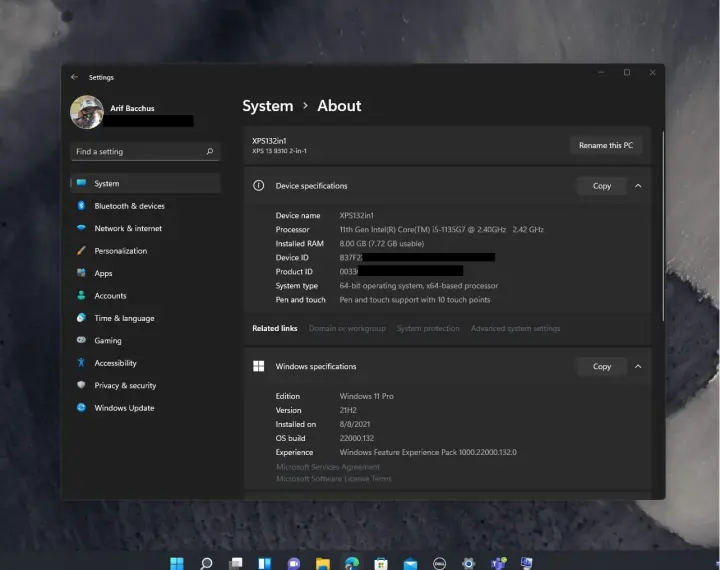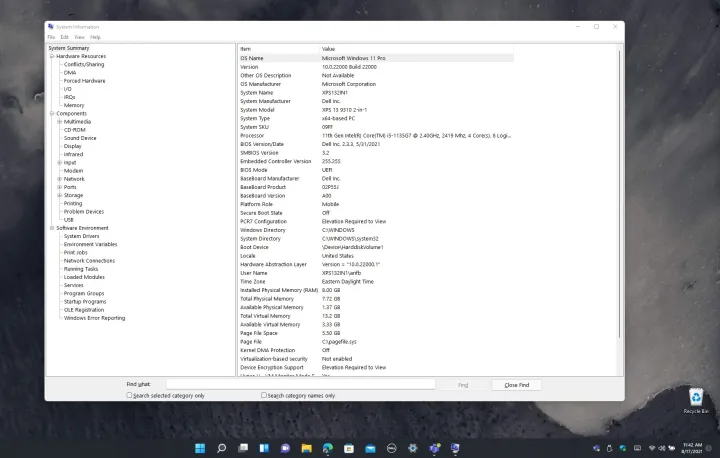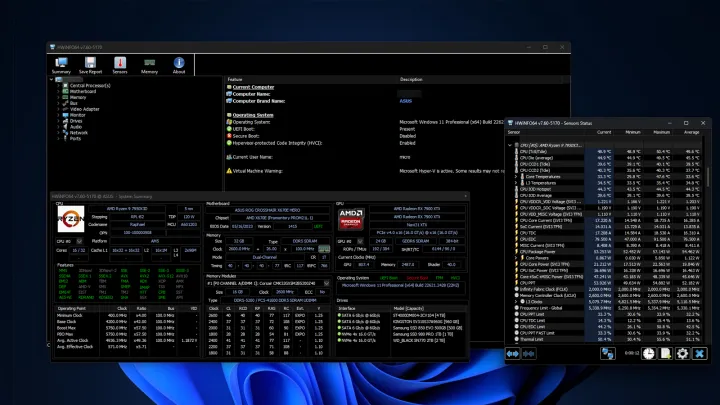As more and more people move up from Windows 10 to Windows 11, many users have to get used to the new look and layout of Windows 11. The specs of your PC are essential because seeing what parts you have can help you decide if you need to improve a particular part.
Using About PC
Check out the “About PC” screen for a straightforward way to see your PC’s basic specs.
Step 1: Get to Windows Settings by pressing Windows + I.
Step 2: Now choose System from the menu on the left.
Step 3: Find “About This PC” at the very bottom of the list and scroll down.
Step 4: This page has details about your CPU type, the amount and speed of your memory, your Windows version, and other things that are important to you.
But it won’t tell you much more. You will need to use one of the other ways below to do that.
Using System Information
The System Information App is one of the best ways to see what your computer can do in Windows 11.
Step 1: Look for MSInfo in the Windows search bar.
Step 2: That should show a list with a link to the System Information App. Pick it.
You can see the System type, Processor, BIOS version, RAM, virtual memory, and more. It will also show you what Windows 11 build you are using.
Step 3: Your CPU, RAM, motherboard, and other components will be displayed on the next screen. The left menu provides details about your network, sound devices, screens, USB connections, and more.
Using HWInfo
You need a third-party app to see real-time information about your System, like how much power it is using, how fast its clock is running, or how hot it is. A lot of people like HWInfo.
Step 1: Get HWInfo from the official website. After that, set it up just like any other software.
Step 2: Open the app and choose Sensors only if you only want to see live data. If you still need to, you can leave both boxes blank to see the complete system overview and the live sensor window.
Step 3: Choose Sensors from the menu at the top to see real-time data. The window that pops up will show you a lot of accurate information about your PC, such as the clock speeds for each core, how much power your graphics card uses, and more. It’s very detailed, which can be annoying, but don’t worry—if you need to know something about your PC, it’s there.
This HWInfo window tells you everything you need to know about every part of your PC. To find out more, click on it.
Where is the computer configuration in Windows 11?
As you look for information about your specs, you should also find the system configuration tool. This can help you change the way your computer starts up or see what services are working, for example. Going to the Start menu and then choosing Run is the best way to get to the system configuration tool. After that, type MSCONFIG and press enter.
This starts with the utility, where you can do anything you need to. For example, you can switch to diagnostic startup mode (useful if your computer is really having problems) and see what programs are set to run automatically on startup (useful to stop programs you don’t want running or to start programs you do want to run automatically when your computer starts up).
So you know what your PC can do. Do you want to know more about how to keep an eye on its temperatures? Here’s how to keep your processor’s temperature in check.













